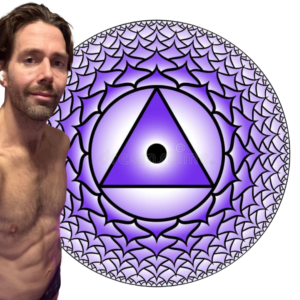Causal Inference Rules and How to Use Them
In systems thinking and yoga alike, progress requires recognizing hidden confounders and addressing them directly rather than being misled by surface-level correlations. When practitioners address the root cause, both seemingly related symptoms often resolve harmoniously.
Rule 1: Independent Variables Are Not Correlated
This rule states that if two variables are causally independent, there will be no observable association between them in the data. For instance, if Variable A does not influence Variable B, their correlation will be zero unless influenced by an external factor.
Intersection with Ashtanga Yoga:
In Ashtanga Yoga, this can be explored through the principle of detachment (vairagya). The yogic system acknowledges that not all elements in life are interconnected in meaningful ways, and discernment (viveka) is required to understand what truly impacts one’s practice or progress.
Practical Applications in Ashtanga:
Detachment from Outcomes: Systemic Perspective: Just as independent variables do not influence each other, a yogi must practice without attachment to the results. The Ashtanga system discourages focusing on the “performance” of postures (e.g., achieving the perfect handstand) because it doesn’t causally correlate with the deeper goals of yoga, such as mental clarity or liberation. Example: One’s ability to achieve a deep backbend (e.g., Kapotasana) might not correlate with their meditative stability. The mental discipline gained through breath control (pranayama) and focus (drishti) is more causally connected to inner transformation. Avoid False Connections in Practice: Many students make the error of assuming that intense physical effort will always lead to deeper practice. Systems thinking reminds us that not all variables are interrelated. Strength and flexibility are independent until integrated through intentional practice—highlighting that overexertion in one domain won’t necessarily influence another. Example: Flexibility and breath steadiness might initially appear unrelated, but they only align when practiced through the intelligent progression of asanas with attention to the breath. Clarity in Teacher-Student Relationships: An experienced teacher understands that certain student issues are causally unrelated and focuses only on addressing meaningful connections. For example, a student’s anxiety about progression in postures is often unrelated to their physical readiness. The teacher’s role is to guide them to recognize the independence of these variables.
Philosophical Link:
The Bhagavad Gita’s advice to act without attachment to the fruits of labor resonates deeply here. Independent variables in life often appear intertwined, but a yogi learns to act with focused effort on meaningful causation while releasing false expectations. By aligning actions only to their true causes, practitioners avoid the emotional turbulence of irrelevant correlations.
Rule 2: Causal Influence Creates Correlation
This rule states that when one variable directly causes another, a correlation between them will emerge in the data. For example, if A causes B, observing changes in A should reveal changes in B.
Intersection with Ashtanga Yoga:
In Ashtanga, cause-and-effect relationships are central to understanding how disciplined practice leads to transformation. The system of vinyasa (movement synchronized with breath) is designed as a causal framework, where each element—breath, posture, gaze—directly affects physical, mental, and spiritual outcomes.
Practical Applications in Ashtanga:
Breath as the Root Cause: Systemic Perspective: Breath control (pranayama) is a causal factor that influences both the body (through oxygenation and stability) and the mind (by calming fluctuations of chitta, or thought). Example: A steady, controlled Ujjayi breath correlates with a calm mind and focused practice. If breath becomes erratic, mental stability and the flow of postures break down. Sequencing as a Causal Pathway: The structured progression of the Ashtanga series reflects a causal logic. Mastery of foundational postures (like those in the Primary Series) strengthens the body and prepares the nervous system for the demands of deeper backbends or hip-openers in the Intermediate Series. Example: Poor alignment in foundational asanas (e.g., Trikonasana) will causally disrupt balance in advanced postures (e.g., Utthita Hasta Padangusthasana). Mindset Shapes Physical Practice: Causal Relationship: A restless or distracted mind causally leads to tension in the body and instability in postures. Example: If the practitioner cultivates focus (dharana) through gaze (drishti), the body aligns naturally. Conversely, a wandering mind correlates with imbalance and increased risk of injury. Energetic Systems and Causal Flow: The practice of bandhas (energy locks) shows a clear cause-effect relationship between subtle body mechanics and physical stability. For example, activating Mula Bandha (root lock) strengthens the core and alleviates lower back strain during deep forward folds.
Philosophical Link:
The Yoga Sutras of Patanjali emphasize that actions (karma) produce results (phala) according to their cause. Ashtanga embodies this principle by teaching that intentional, disciplined effort directly correlates with progress in practice.
This rule also aligns with the concept of sankalpa (intentional focus): what you direct your energy toward causally determines the results you experience. If you focus on consistency, over time the body will adapt, and deeper postures will follow naturally.
Rule 3: Confounding Creates Correlation
This rule highlights how a shared common cause, or confounder, can create a correlation between two variables even if no direct causal link exists between them. For example, if Variable C influences both A and B, A and B might appear correlated even though they do not directly influence each other.
Intersection with Ashtanga Yoga:
In Ashtanga, confounders often appear as unseen influences—habitual patterns, underlying tensions, or energetic imbalances—that obscure the true relationship between effort and progress. Recognizing and addressing these confounders is essential for a deeper, more intentional practice.
Practical Applications in Ashtanga:
Hidden Tension as a Confounder: Systemic Perspective: Unreleased physical tension (e.g., tightness in the hips or shoulders) can cause both poor posture alignment and breath instability. The practitioner may think poor alignment directly causes irregular breathing, but both are symptoms of the same root issue—tension. Example: In seated forward folds (e.g., Paschimottanasana), a tight lower back may cause shallow breathing. Addressing the deeper confounder (tension) resolves both issues. Lifestyle Factors as Confounders: Poor sleep, diet, or stress can be confounders influencing both physical strength and mental focus. A practitioner might think they’re “bad” at a pose because of physical limitations, when in fact their energy levels are undermined by external lifestyle factors. Example: If a practitioner finds balance elusive in a posture like Utthita Hasta Padangusthasana, the true confounder might be chronic fatigue, not a lack of strength or flexibility. Ego as a Confounder: Ego can distort perceptions of cause and effect in practice. A student might push too hard, thinking greater effort leads to faster progress, but ego-driven strain can lead to injuries, masking the real relationship between patience and sustainable growth. Example: Straining in Kapotasana (deep backbend) may seem like a direct cause of progress, but the underlying confounder—impatience—leads to overexertion and tension, slowing progress overall. Emotional Residues as Confounders: Emotional stress stored in the body can create physical stiffness and distract the mind, leading to a perceived lack of skill in practice. Both the physical and mental challenges stem from the same confounder—unresolved emotional tension. Example: A student struggling with hip-openers like Eka Pada Rajakapotasana (one-legged pigeon) might misattribute their difficulty to a physical limitation, when the true confounder is emotional resistance stored in the hips.
Philosophical Link:
The Bhagavad Gita advises practitioners to identify and overcome the gunas (qualities of nature—sattva, rajas, tamas) as confounding forces that cloud perception. Similarly, Patanjali’s Yoga Sutras advocate for viveka (discernment) to identify the root cause of suffering.
Rule 4: Random Manipulation Protects a Variable from Causal Influence
This rule explains that when you randomly assign values to a variable (as in randomized controlled trials), you shield it from causal influences by other variables. Essentially, randomization prevents external factors from introducing bias or correlation.
Intersection with Ashtanga Yoga:
In Ashtanga, this principle aligns with practices designed to neutralize external influences, such as the disciplined use of breath (pranayama), steady gaze (drishti), and a consistent sequence of poses (vinyasa krama). These structured practices serve as a kind of “randomization,” creating conditions where external distractions and internal fluctuations are less likely to interfere with progress.
Practical Applications in Ashtanga:
Breath as Randomization: Breath control ensures that emotional or mental fluctuations do not causally influence the quality of the physical practice. Example: In challenging poses like Marichyasana D, maintaining steady Ujjayi breath shields the practitioner from reacting emotionally to discomfort or difficulty. The breath acts as a stabilizer, ensuring external influences don’t derail the pose. Set Sequences as Neutralizers: The unchanging structure of the Ashtanga sequence prevents practitioners from being swayed by personal preferences, mood, or ego-driven tendencies. By adhering to the same sequence daily, external variables (like skipping harder poses) are neutralized. Example: On days when energy is low, the practitioner still attempts the full series rather than arbitrarily shortening it, preserving the integrity of the practice and protecting progress from subjective choices. Focus on Drishti (Gaze): Drishti acts as a randomizer by locking attention to a single point, reducing the influence of external distractions on mental focus. Example: During Trikonasana (triangle pose), keeping the gaze fixed on the upper hand minimizes the impact of external movements or internal doubts, keeping the mind steady. Letting Go of Comparison: Practicing Ashtanga in a Mysore-style setting can neutralize the tendency to compare oneself to others. Everyone practices at their own pace and level, shielding the practice from external influences like competition or self-criticism. Example: A beginner struggling with Bhujapidasana doesn’t feel pressured to move forward by observing an advanced practitioner because the structure of the practice emphasizes individual progression.
Philosophical Link:
The Bhagavad Gita’s teaching to act without attachment (nishkama karma) resonates here. Practicing with detachment acts as a kind of randomization—removing external factors like the need for praise or fear of failure from influencing your efforts.
Similarly, the Yoga Sutras advocate for equanimity (samatva), where one remains unaffected by external praise or criticism. Randomization in this context is the steady application of disciplined effort, ensuring external variables don’t interfere with internal progress. This protects the integrity of the practice and allows true growth to emerge.
Rule 5: Controlling for a Confounder Blocks Correlation Arising from That Confounder
This rule states that adjusting for a confounding variable can eliminate the spurious correlation it creates between two variables. In simpler terms, addressing the root cause of an issue removes misleading relationships and reveals the true connections.
Intersection with Ashtanga Yoga:
In Ashtanga, the practice systematically addresses confounding factors—such as physical misalignments, mental distractions, or energetic imbalances—that obscure the connection between effort and progress. By “controlling” for these confounders through intentional techniques, practitioners can experience the deeper benefits of yoga more directly.
Practical Applications in Ashtanga:
Breath as the Ultimate Control Mechanism: Breathwork (pranayama) regulates both physical tension and mental fluctuations, eliminating their confounding effect on asana performance. This reveals a true connection between posture and inner stillness. Example: In challenging poses like Supta Kurmasana, struggling with flexibility might seem to prevent success, but the true confounder could be shallow breathing. Focusing on steady breath often leads to a surprising ease in the posture. Controlling Physical Misalignments: Misalignments in one area of the body can confound the relationship between strength and stability in an asana. Controlling alignment through consistent adjustments allows the practitioner to see what the pose truly demands. Example: In Trikonasana, an unstable stance may appear to be caused by weak legs, but correcting the foot alignment often resolves the issue without needing to focus directly on strength. Mental Clarity through Drishti: Wandering thoughts can act as confounders, disrupting balance and focus. The use of drishti (focused gaze) eliminates this mental noise, revealing the true connection between concentration and stability. Example: In a balancing pose like Garudasana, focusing on a fixed point helps control the mind’s fluctuations, making it clear that steadiness arises from mental focus rather than sheer physical effort. Energetic Balance with Bandhas: Weak engagement of bandhas (energy locks) can act as a confounder, making certain poses feel unnecessarily difficult. Engaging Mula Bandha (root lock) and Uddiyana Bandha (core lock) provides the necessary support, allowing the practitioner to experience the true flow of the pose. Example: In arm balances like Bakasana, practitioners might feel they lack strength, but engaging the core through Uddiyana Bandha reveals that the real issue was insufficient energy control.
Philosophical Link:
The Yoga Sutras emphasize the removal of obstacles (antarayas) to reveal the true nature of the self. Patanjali lists distractions like doubt, laziness, and agitation as confounders that prevent clarity of mind and progress in yoga. By addressing these root obstacles, practitioners clear the path to deeper awareness.
In systems thinking, controlling for a confounder ensures that systems function as intended. Similarly, in yoga, identifying and addressing confounders like physical misalignment or mental distraction ensures that the true relationships—between breath, movement, and awareness—emerge unclouded. This control leads to a more authentic and effective practice.
Rule 5: Controlling for a Confounder Blocks Correlation Arising from That Confounder
This rule states that adjusting for a confounding variable can eliminate the spurious correlation it creates between two variables. In simpler terms, addressing the root cause of an issue removes misleading relationships and reveals the true connections.
Intersection with Ashtanga Yoga:
In Ashtanga, the practice systematically addresses confounding factors—such as physical misalignments, mental distractions, or energetic imbalances—that obscure the connection between effort and progress. By “controlling” for these confounders through intentional techniques, practitioners can experience the deeper benefits of yoga more directly.
Practical Applications in Ashtanga:
Breath as the Ultimate Control Mechanism: Breathwork (pranayama) regulates both physical tension and mental fluctuations, eliminating their confounding effect on asana performance. This reveals a true connection between posture and inner stillness. Example: In challenging poses like Supta Kurmasana, struggling with flexibility might seem to prevent success, but the true confounder could be shallow breathing. Focusing on steady breath often leads to a surprising ease in the posture. Controlling Physical Misalignments: Misalignments in one area of the body can confound the relationship between strength and stability in an asana. Controlling alignment through consistent adjustments allows the practitioner to see what the pose truly demands. Example: In Trikonasana, an unstable stance may appear to be caused by weak legs, but correcting the foot alignment often resolves the issue without needing to focus directly on strength. Mental Clarity through Drishti: Wandering thoughts can act as confounders, disrupting balance and focus. The use of drishti (focused gaze) eliminates this mental noise, revealing the true connection between concentration and stability. Example: In a balancing pose like Garudasana, focusing on a fixed point helps control the mind’s fluctuations, making it clear that steadiness arises from mental focus rather than sheer physical effort. Energetic Balance with Bandhas: Weak engagement of bandhas (energy locks) can act as a confounder, making certain poses feel unnecessarily difficult. Engaging Mula Bandha (root lock) and Uddiyana Bandha (core lock) provides the necessary support, allowing the practitioner to experience the true flow of the pose. Example: In arm balances like Bakasana, practitioners might feel they lack strength, but engaging the core through Uddiyana Bandha reveals that the real issue was insufficient energy control.
Philosophical Link:
The Yoga Sutras emphasize the removal of obstacles (antarayas) to reveal the true nature of the self. Patanjali lists distractions like doubt, laziness, and agitation as confounders that prevent clarity of mind and progress in yoga. By addressing these root obstacles, practitioners clear the path to deeper awareness.
In systems thinking, controlling for a confounder ensures that systems function as intended. Similarly, in yoga, identifying and addressing confounders like physical misalignment or mental distraction ensures that the true relationships—between breath, movement, and awareness—emerge unclouded. This control leads to a more authentic and effective practice.
Rule 7: Controlling for a Collider Leads to Correlation
This rule explains that conditioning on a collider—a variable that is a shared effect of two other variables—can introduce a spurious correlation between them, even if they are otherwise independent. In other words, adjusting for a collider creates a false sense of connection.
Intersection with Ashtanga Yoga:
Colliders in Ashtanga Yoga often manifest as unnecessary points of focus or intervention. Over-controlling a shared effect, such as appearance or performance, can create misleading impressions of progress or challenges, distracting practitioners from authentic cause-and-effect relationships. Recognizing and avoiding this “false correlation” helps practitioners maintain clarity in their practice.
Practical Applications in Ashtanga:
Avoiding Obsession with Aesthetic Outcomes: Aesthetic elements of poses (like how “perfect” a pose looks) can act as colliders between physical capability and ego. Over-focusing on how the pose appears introduces a misleading correlation, making practitioners believe that appearance equals progress. Example: A practitioner may achieve a deep forward fold (e.g., Paschimottanasana) by collapsing the chest, creating the illusion of flexibility. Focusing on alignment instead reveals the true state of progress. Over-Adjusting for External Praise: Praise from teachers or peers can act as a collider between self-worth and effort. Conditioning one’s motivation on external feedback creates a false link between approval and progress, potentially undermining intrinsic motivation. Example: A student might push too hard in Kapotasana to impress others, resulting in strain or injury, rather than progressing mindfully. Misinterpreting Fatigue as Weakness: Fatigue can act as a collider between effort and capability. Over-focusing on tiredness may lead practitioners to wrongly attribute it to a lack of strength, rather than natural energy fluctuations. Example: Struggling in a demanding pose like Utthita Hasta Padangusthasana after a long practice might seem like a sign of poor balance, but the true factor is temporary fatigue. Performance Pressure in Group Settings: Group practice settings can act as colliders between ego and discipline. Comparing oneself to others creates artificial correlations, making progress appear tied to competition rather than personal effort. Example: A practitioner may rush through the vinyasa count to keep pace with others, sacrificing alignment and breath integrity.
Philosophical Link:
The Yoga Sutras emphasize the dangers of false identifications (asmita), where the practitioner mistakenly identifies with external factors like appearance or achievements. This parallels the concept of colliders: over-controlling external effects can distort internal growth.
Similarly, the Bhagavad Gita advocates for swadharma—acting according to one’s own path—without comparison or attachment. By avoiding false correlations introduced by colliders, practitioners stay focused on authentic progress, free from ego-driven distractions.
Key Insight:
In systems thinking, controlling for a collider can lead to misleading relationships that don’t reflect reality. In Ashtanga, avoiding excessive focus on external outcomes, comparisons, or praise ensures that the practice remains a truthful expression of effort and growth, unclouded by artificial correlations. By bypassing colliders, practitioners stay aligned with the deeper goals of yoga: self-awareness, equanimity, and liberation.
Rule 8: Controlling for a Causal Descendant Partially Controls for the Ancestor
This rule states that adjusting for a variable that is an effect (descendant) of another variable (ancestor) can partially account for the influence of the original cause. However, this control is incomplete since it addresses the consequence rather than the root cause.
Intersection with Ashtanga Yoga:
In Ashtanga, this principle aligns with addressing surface-level symptoms (descendants) of deeper imbalances (ancestors). While controlling for effects can provide temporary relief or insight, true progress requires identifying and addressing the root cause. The practice encourages deeper inquiry to prevent surface corrections from becoming habitual crutches.
Practical Applications in Ashtanga:
Addressing Physical Symptoms as Descendants: Physical discomfort (e.g., tightness or pain) is often a descendant of deeper imbalances, such as poor alignment or habitual tension. Controlling the symptom alone provides partial relief, but addressing the root alignment issue resolves the cause. Example: Knee pain in poses like Padmasana might be alleviated by reducing range of motion, but the true solution lies in opening the hips, which is the root cause of strain. Emotional States as Descendants: Emotional reactivity often stems from deeper patterns of attachment or aversion. Controlling emotional expressions (e.g., frustration during a difficult pose) provides temporary calm but doesn’t address the underlying conditioning (samskara). Example: Feeling anxious in inversions like Sirsasana can be managed by taking breaks, but deeper work on cultivating trust and focus provides lasting stability. Shallow Breath as a Descendant: Shallow breathing can be controlled directly, but its root causes—mental agitation or physical tension—require deeper attention to fully resolve. Example: In challenging backbends like Kapotasana, consciously deepening the breath is helpful but insufficient unless the practitioner also addresses anxiety or tightness in the shoulders and chest. Surface Adjustments in Alignment: Correcting a visible misalignment in a pose, such as a rounded spine in Paschimottanasana, partially addresses the issue but often ignores the deeper causes like tight hamstrings or weak core muscles. Example: A practitioner might focus on straightening the spine, but real progress comes from gradually releasing the hamstrings and strengthening the lower back.
Philosophical Link:
The Yoga Sutras encourage addressing the root of suffering (kleshas) rather than merely managing their outward manifestations. Patanjali emphasizes practices like self-study (svadhyaya) and meditation (dhyana) to identify and dissolve deeper causes of imbalance, rather than focusing solely on their effects.
Similarly, the Bhagavad Gita advocates for confronting foundational obstacles on the spiritual path, such as ego and ignorance, rather than simply adjusting superficial behaviors.
Key Insight:
In systems thinking, controlling a descendant provides partial but incomplete resolution. In Ashtanga, this highlights the need to go beyond surface-level corrections and investigate the root causes of physical, emotional, or energetic challenges. By addressing these ancestors directly, practitioners achieve transformative and lasting progress rather than temporary fixes.






